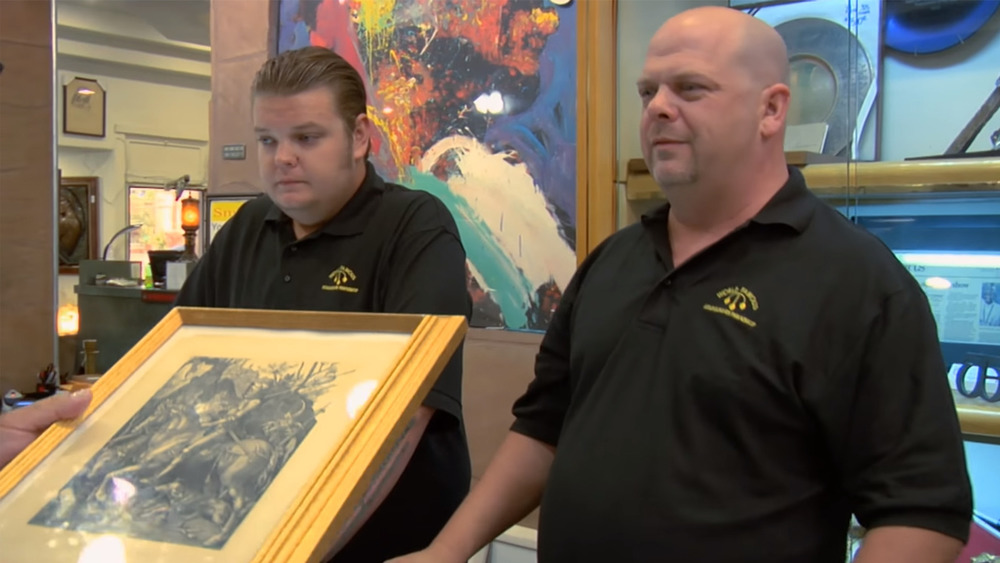The $5,500 Pawn Stars Gamble That Paid Off In A Big Way
Buying and selling at a pawn shop can sometimes function like gambling. Sellers are ultimately hoping that the buyer might overestimate the value of their item, paying more than it's worth based on a lack of expertise. The buyer, meanwhile, is hoping that it's the seller who possesses a lack of expertise, allowing them to later sell an item for considerably more than its agreed-upon purchase price. This transactional drama serves as the basis for pawn shop reality TV series Pawn Stars.
That said, the appraisals shown on air in Pawn Stars are scripted based on a prior agreement between the seller and the buyers at the World Famous Gold & Silver Pawn Shop in Las Vegas, Nevada. Though negotiations may ultimately take place behind closed doors rather than on camera, the stars of Pawn Stars are nevertheless gambling from time to time based on limited knowledge.
Sometimes a Pawn Stars deal loses the shop money. The responsible party, then, often has to undertake some form of punishment, like when youngest Harrison family member Corey overpaid for an Evel Knievel pinball machine. Other times, the stars of Pawn Stars strike gold, so to speak, like when a seller brought in a work by German printmaker Albrecht Dürer.
When his art appraiser is away, Rick Harrison will play
The Albrecht Dürer print featured on Pawn Stars included in its design a date in the 1500s. Based on its presumed old age, its owner was hoping to walk away with at least a few thousand dollars after selling it to the World Famous Gold & Silver Pawn Shop. That said, when Dürer was alive in the 1500s, he was producing wooden carvings. Those were then used like stamps to create numerous woodblock prints, none of which was inherently an original copy. While a woodblock carved by Dürer would therefore have been made in the 1500s, a print produced with it could theoretically be from any point in time.
Early in the negotiation process, current pawn shop patriarch Rick Harrison explained that his regular art appraiser, Brett Maly, was busy with a gallery opening. Therefore Rick had to use his own art expertise to assess the Dürer print's value upon its televised appearance. After a short (scripted, but likely representative of prior negotiations) back-and-forth, Rick and the print's seller agreed upon a price of $5,500.
Later in the episode, Rick was able to bring the work to Brett Maly. He explained that, while a Dürer print from the 1500s might be capable of selling for upwards of $350,000, Rick's was most likely from at least the next century. That said, he nevertheless estimated its value at anywhere from $20,000 to 50,000. Rick, therefore, had made the shop a minimum of $14,500 based on that valuation, counting the Dürer print among a number of big wins for the Pawn Stars crew.

